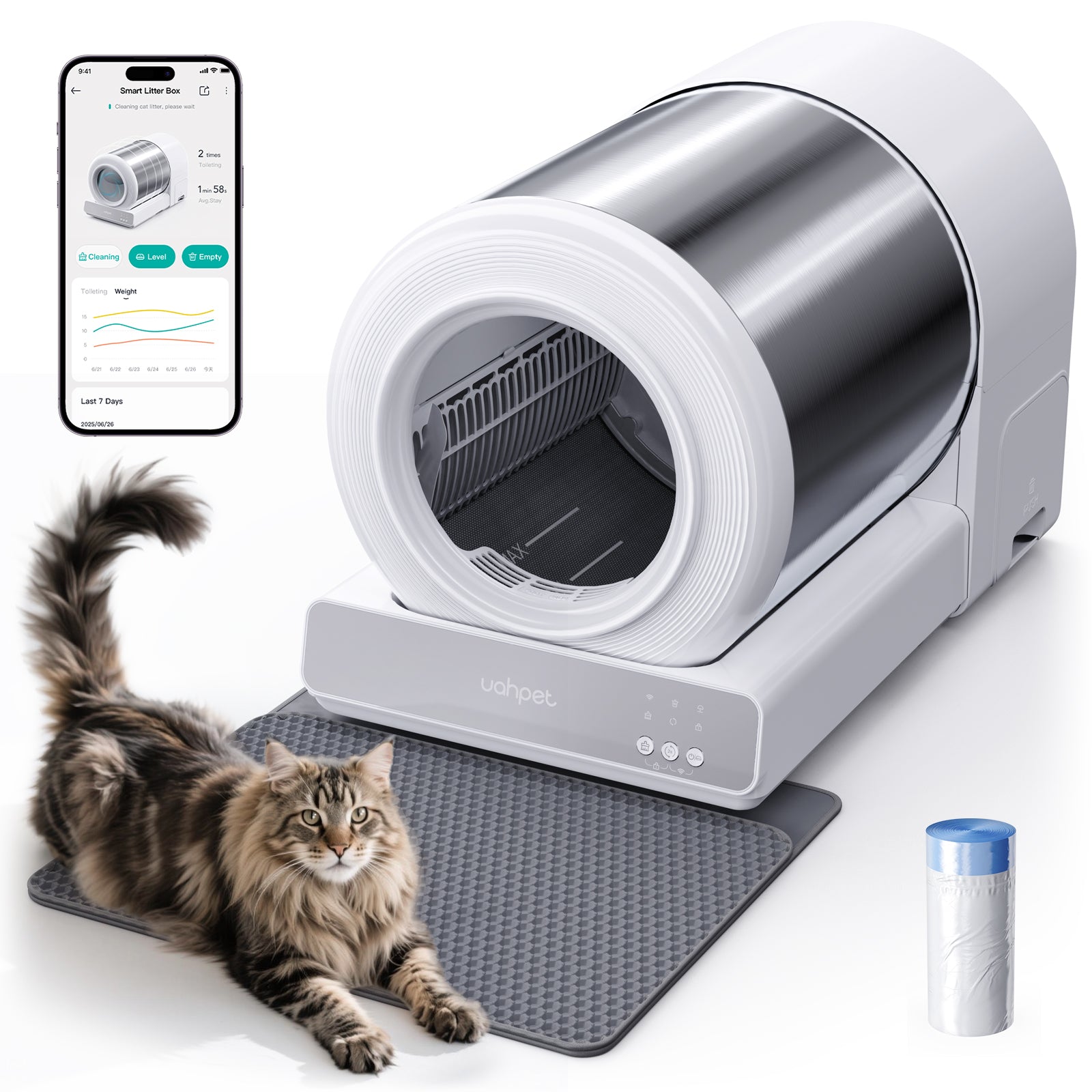Keeping your cat's water fountain clean is crucial for their health and well-being. A plastic cat water fountain can harbor bacteria, mold, and other contaminants if not properly maintained. In this comprehensive guide, we'll walk you through the steps to effectively disinfect your plastic cat water fountain, ensuring it remains a safe and hygienic source of water for your feline friend.
Why Disinfecting Your Cat's Water Fountain is Important
Regular disinfection of your cat's water fountain is essential to prevent the buildup of harmful bacteria and mold. Cats are sensitive to contaminants in their water, which can lead to health issues such as urinary tract infections, gastrointestinal problems, and other illnesses. By keeping the fountain clean, you not only protect your cat's health but also extend the lifespan of the fountain itself.
Materials Needed for Disinfection
Before you begin the disinfection process, gather the following materials:
- Mild dish soap
- White vinegar or a pet-safe disinfectant
- A soft brush or sponge
- Clean, lint-free cloths
- Warm water
Step-by-Step Guide to Disinfecting a Plastic Cat Water Fountain
Step 1: Unplug and Disassemble the Fountain
Safety first! Always unplug the fountain from the electrical outlet before starting the cleaning process. Carefully disassemble the fountain, removing all detachable parts such as the water reservoir, pump, and any filters. This will allow you to clean each component thoroughly.
Step 2: Rinse with Warm Water
Rinse all parts of the fountain with warm water to remove any loose debris or dirt. This initial rinse will make the subsequent cleaning steps more effective.
Step 3: Clean with Mild Dish Soap
Using a mild dish soap and a soft brush or sponge, scrub all parts of the fountain, paying special attention to areas where grime and bacteria may accumulate, such as the pump and water channels. Avoid using harsh chemicals or abrasive materials that could damage the plastic.
Step 4: Disinfect with White Vinegar or Pet-Safe Disinfectant
For a natural disinfectant, soak the fountain parts in a solution of equal parts white vinegar and water for about 30 minutes. Alternatively, you can use a pet-safe disinfectant according to the manufacturer's instructions. This step will help kill any remaining bacteria or mold.
Step 5: Rinse Thoroughly
After disinfecting, rinse all parts thoroughly with clean water to remove any residue from the cleaning agents. Any leftover soap or disinfectant could be harmful to your cat if ingested.
Step 6: Dry Completely
Use clean, lint-free cloths to dry all parts of the fountain completely. Moisture can promote the growth of mold and bacteria, so ensuring everything is dry before reassembly is crucial.
Step 7: Reassemble and Refill
Once all parts are dry, reassemble the fountain and refill it with fresh water. Plug it back in and ensure it's functioning correctly before allowing your cat to use it again.
Tips for Maintaining a Clean Cat Water Fountain
- Clean the fountain at least once a week to prevent the buildup of bacteria and mold.
- Replace the water daily to keep it fresh and clean.
- Inspect the fountain regularly for any signs of wear or damage that could affect its cleanliness.
- Consider using a water filter to reduce impurities and extend the time between cleanings.
Common Mistakes to Avoid
- Using harsh chemicals or abrasive materials that can damage the plastic or leave harmful residues.
- Neglecting to clean the pump, which can become a breeding ground for bacteria.
- Not drying the fountain thoroughly, which can lead to mold growth.
- Overlooking the importance of regular maintenance, which can compromise your cat's health.
By following these steps and tips, you can ensure that your plastic cat water fountain remains a clean and safe source of hydration for your beloved pet. Regular disinfection and maintenance are key to keeping your cat healthy and happy, and your fountain in top condition.














